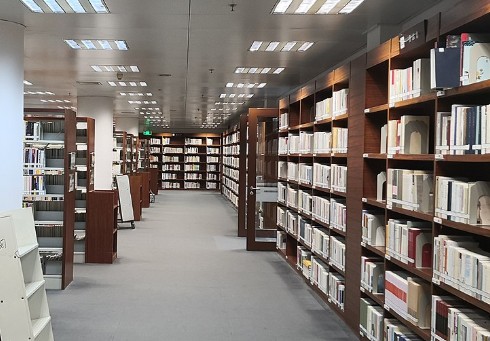The development of the Internet of Things will bring a series of profound changes to libraries. Starting from the concept of the Internet of Things, this article introduces the origin and characteristics of the Internet of Things, summarizes the development status of the Internet of Things, designs the intelligent library system architecture, explains the impact of the Internet of Things on the development of libraries, and analyzes the application of the Internet of Things. The key issue.
Con el rápido desarrollo de la tecnología de la información, el Internet de los objetos se considera la cuarta revolución de la información en el mundo científico y tecnológico, después de los ordenadores, Internet y las redes de comunicaciones móviles. Como centro importante para las aplicaciones de la industria de la información, las bibliotecas miran hacia atrás en su historia de desarrollo y descubren que cada cambio en la tecnología de la información promoverá un salto adelante en la gestión y los servicios bibliotecarios. Como cuarta ola del desarrollo de la industria de la información, el Internet de las cosas promoverá definitivamente modelos inteligentes de gestión de bibliotecas, servicios humanizados y un trabajo más eficiente, realizando así la transformación de las actuales bibliotecas digitales en bibliotecas inteligentes.
Intelligent library system based on Internet of Things
1 The concept of smart library Smart library, as a new model for future library development, is also called smart library. At present, the industry has different descriptions of its connotation: From the perspective of smart buildings, Chen Honghu believes that a smart library is an intelligent building formed by applying smart technology to library construction. It is a digital combination of smart buildings and highly automated management. The organic combination and innovation of libraries [12]; Yan Dong believes from the perspective of intelligent computing that smart libraries = libraries + Internet of Things + cloud computing + intelligent equipment. Smart libraries realize intelligent services and services through the Internet of Things. Management[13]; From the perspective of digital library services, Li Jingjing believes that smart libraries are digital libraries that make full use of information and communication technology (ICT) to realize computerization of various information to conduct remote reading of books and materials, reservation of seats, etc. [14]; Huang Jin believes from the perspective of perception that smart libraries are a combination of perception intelligence and digital library service intelligence. [15] In summary, the author believes that smart libraries use intelligent sensing technologies such as the Internet of Things to realize the management of the library’s main components such as the architectural environment, document resources, equipment assets, and readers, forming a set of services and management An all-in-one, intelligent system.
2 System Architecture of Intelligent Library The system architecture of intelligent library can be designed into 5 logical levels, including perception layer, device layer, transmission layer, platform layer and application layer. The first layer is the perception layer, which is the facial features and skin of the intelligent library system. It can identify objects through wireless positioning technologies such as RFID tags, WiFi and Zigbee, and realize the collection of information about books, readers, and the built environment; the second layer is equipment. The third layer is the brain and nerve center of the intelligent library system, which processes the collected information through numerous servers; the third layer is the transmission layer, which is the information transmission center of the intelligent library system and transmits processed information through the Internet, Wireless, etc. ; The fourth layer is the platform layer, which provides the basic software platform environment for the intelligent library system; the fifth layer is the application layer, which provides various business management, maintenance, operation and other interfaces for the intelligent library system. The architecture of the smart library system is shown in the figure below.

cost issue
When constructing a library Internet of Things system, cost issues should be considered. In the Internet of Things system, readers are connected to things, and things are connected to things. Even if you want to realize a partial Internet of Things, huge investment is required.First of all, although the price of domestic RFID electronic tags has dropped from 0.6-0.85 US dollars in the past to the current 1-2 yuan, considering that libraries often

With a collection of millions of books, it is very expensive to complete the transformation of RFID electronic tags in the entire library. Secondly, it is necessary to set up a huge network system and purchase various access devices, such as WIFI, ZIG-BEE, Bluetooth, etc. , the investment will also be quite huge; finally, realizing the layout of various sensors and intelligent control systems requires the transformation of the original library building, which also requires a large amount of capital investment.Therefore, the cost issue has become the primary factor restricting the application of Internet of Things technology in libraries.